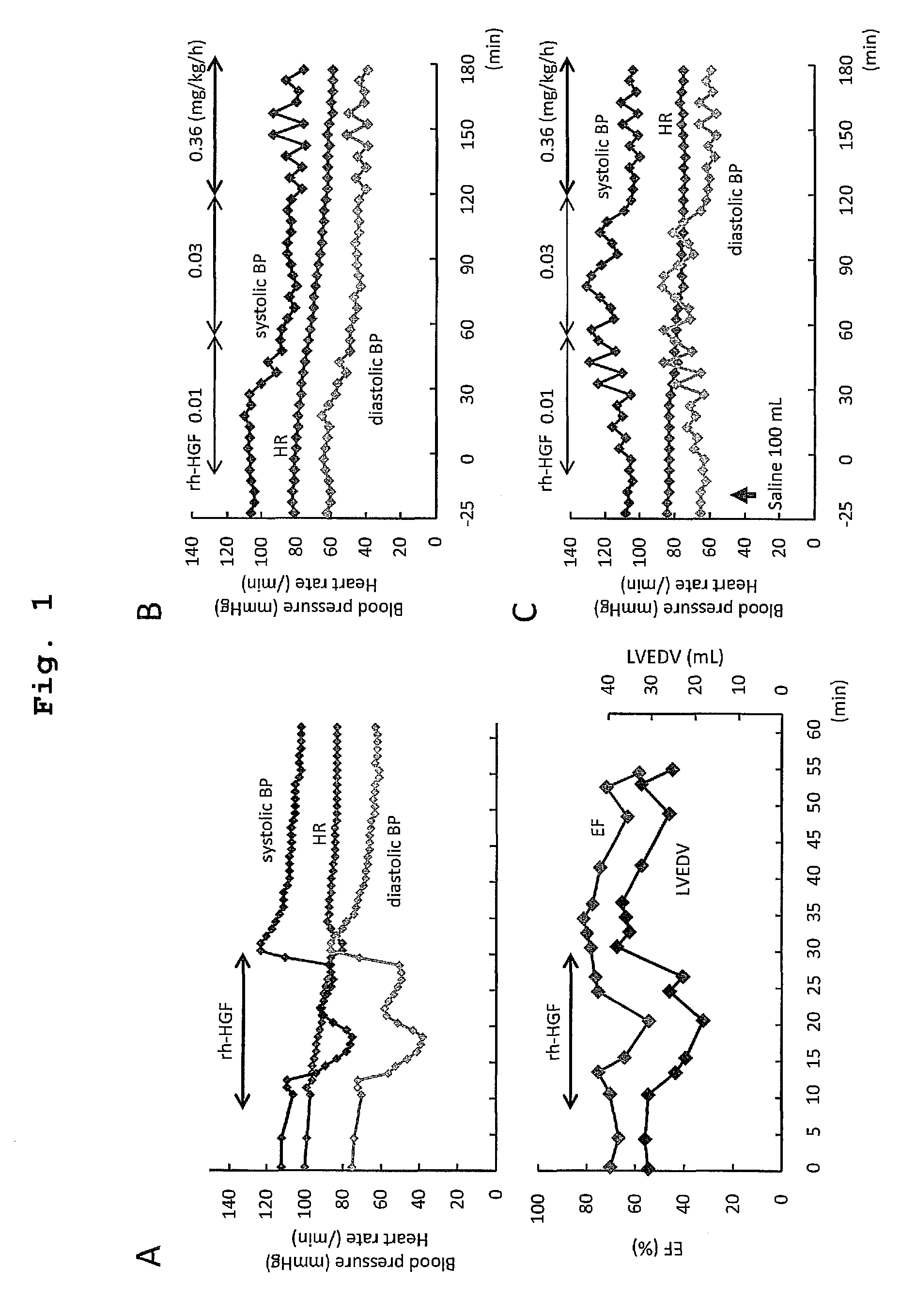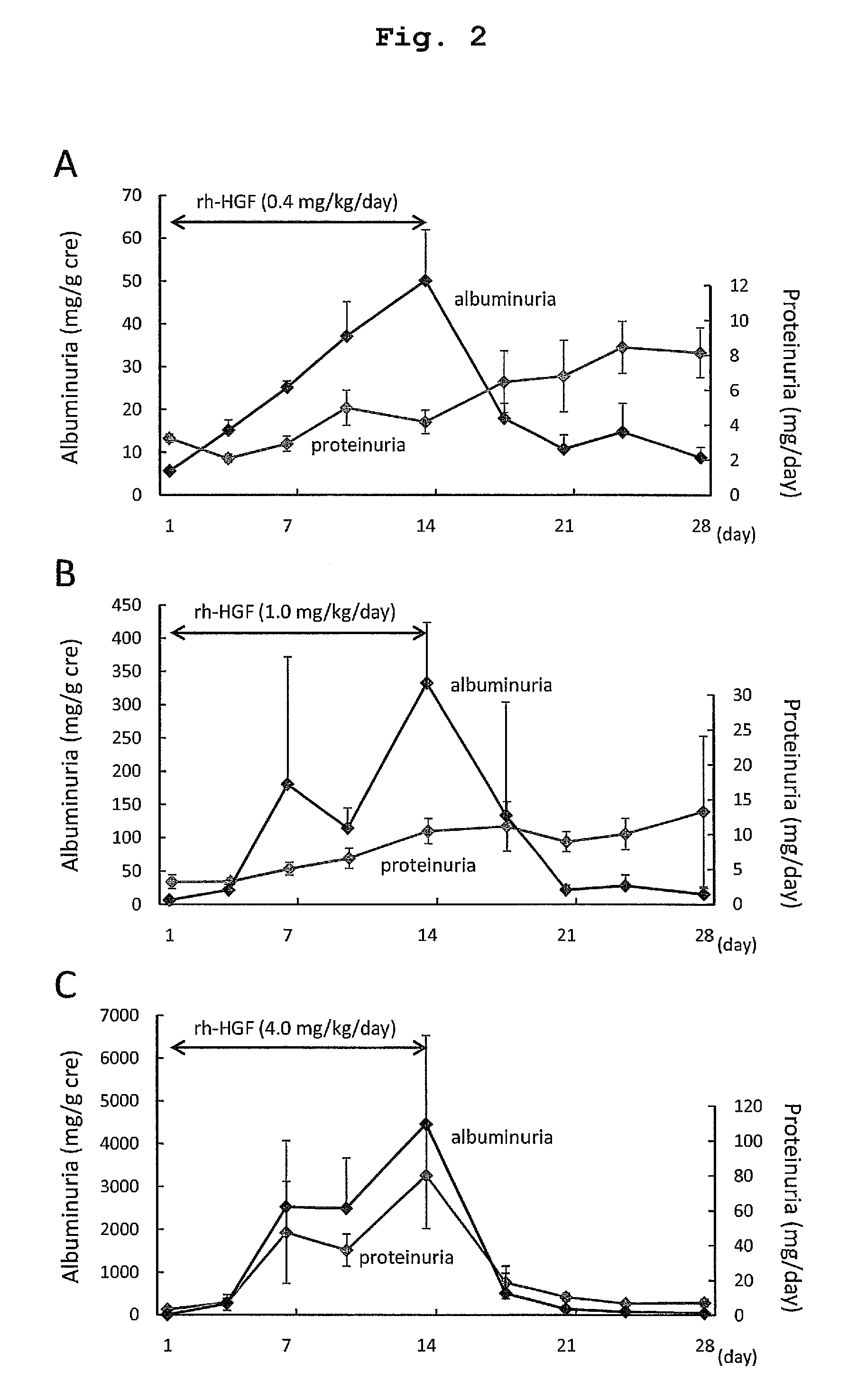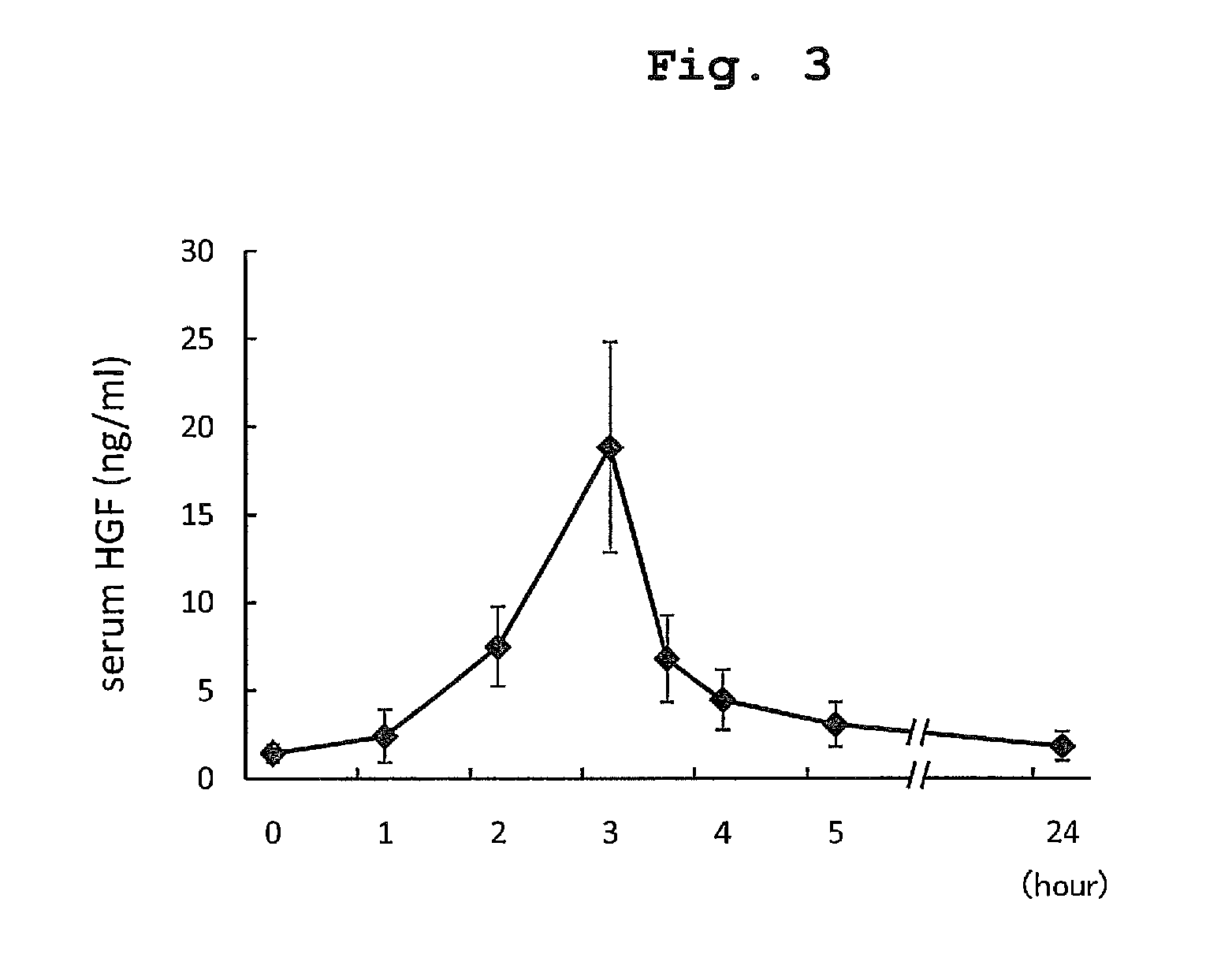Acute hepatic insufficiency depressant and method for evaluating drug efficacy thereof
a technology for liver failure and suppressant, which is applied in the field of acute liver failure suppressant and the treatment agent for acute liver failure, can solve the problems of poor prognosis, unclear safety and the like of hgf in the human body, and poor prognosis, and achieves the effect of constant lifesaving effect and poor prognosis
- Summary
- Abstract
- Description
- Claims
- Application Information
AI Technical Summary
Benefits of technology
Problems solved by technology
Method used
Image
Examples
reference example 1
Establishment of rh-HGF Administration Method to Respond to a Decrease in Blood Pressure in Miniature Swine
[0151]In general pharmacological tests, intravenous administration of rh-HGF (1.0 or 0.2 mg / kg) caused a rapid decrease in systolic blood pressure (systolic BP) in miniature swine, whereas respiratory status was not affected. Therefore, before starting the clinical test, we further investigated the effect of rh-HGF on circulatory status in miniature swine under general anesthesia. When a total dose of rh-HGF of 1.0 mg / kg was administered over the course of 20 min, a decrease in systolic BP occurred promptly, and continued throughout rh-HGF administration (FIG. 1A). Although heart rate (HR) gradually decreased, no electrocardiographic abnormalities, including arrhythmia and ischemic changes, were observed throughout the experimental period. Additionally, echocardiography showed a decrease in left ventricular end-diastolic volume (LVEDV) as well as ejection fraction (EF), in para...
reference example 2
Evaluation of Renal Toxicity Induced by Repeated Administration of rh-HGF in Rats
[0153]Repeated administration toxicity tests using rats or cynomolgus monkeys identified an increase in urinary excretion of albumin and protein as a potential adverse event in a clinical test. Therefore, we further examined whether renal toxicity induced by repeated rh-HGF administration for 14 days was reversible. 0.4, 1.0, and 4.0 mg / kg / day of rh-HGF were administered to rats for 14 days, after which the rats were observed for 14 days. Urinary excretion of albumin increased in rats treated with rh-HGF from day 4 in a dose dependent manner (FIG. 2). In rats treated with 0.4 or 1.0 mg / kg / day of rh-HGF, urinary excretion of albumin preceded an increase in proteinuria (FIGS. 2A and B). However, neither serum creatinine nor BUN were affected throughout the experimental period. In addition, urinary excretion of albumin gradually decreased after the completion of rh-HGF administration during the 14-day obse...
example
rh-HGF Administration Phase I / II Trial in Subacute Fulminant Hepatitis (FHSA) and Late Onset Hepatic Failure (LOHF) Patients
[0154](1) Patient Characteristics
[0155]Between September 2005 and June 2008, 20 patients with FHSA or LOHF were evaluated for participation in the clinical test of rh-HGF. As a result, 16 patients were excluded because they met one or more of the exclusion criteria, and only 4 patients were finally enrolled. Fulminant hepatitis is a relatively rare syndrome in Japan (698 patients between 1998 and 2003), and the patients with severe complications were excluded so as to more precisely evaluate the safety and efficacy of the therapy, which made the recruitment of trial subjects difficult. For this reason, the dose escalation study was not performed, and the same dose of 0.6 mg / m2 / day as the initial dose was administered to all patients throughout the administration period. The age of the participating subjects was 40-71 years old and two men and two women were inv...
PUM
| Property | Measurement | Unit |
|---|---|---|
| molecular weight | aaaaa | aaaaa |
| volume | aaaaa | aaaaa |
| volume | aaaaa | aaaaa |
Abstract
Description
Claims
Application Information
 Login to View More
Login to View More - R&D
- Intellectual Property
- Life Sciences
- Materials
- Tech Scout
- Unparalleled Data Quality
- Higher Quality Content
- 60% Fewer Hallucinations
Browse by: Latest US Patents, China's latest patents, Technical Efficacy Thesaurus, Application Domain, Technology Topic, Popular Technical Reports.
© 2025 PatSnap. All rights reserved.Legal|Privacy policy|Modern Slavery Act Transparency Statement|Sitemap|About US| Contact US: help@patsnap.com



